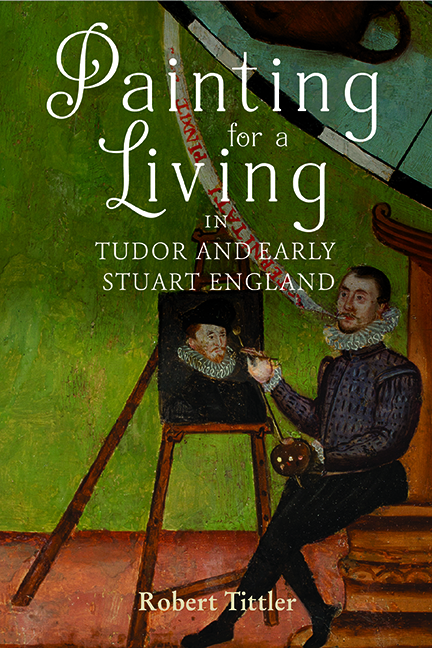Book contents
- Frontmatter
- Dedication
- Contents
- List of Illustrations
- Preface
- Acknowledgements
- Editorial Conventions and Abbreviations
- Part I Introduction
- Part II Kinds of People
- Part III Particular Specialities
- Part IV Ways and Means
- Part V Conclusion
- Bibliography
- Index
- STUDIES IN EARLY MODERN CULTURAL, POLITICAL AND SOCIAL HISTORY
- Frontmatter
- Dedication
- Contents
- List of Illustrations
- Preface
- Acknowledgements
- Editorial Conventions and Abbreviations
- Part I Introduction
- Part II Kinds of People
- Part III Particular Specialities
- Part IV Ways and Means
- Part V Conclusion
- Bibliography
- Index
- STUDIES IN EARLY MODERN CULTURAL, POLITICAL AND SOCIAL HISTORY
Summary
Consideration of the workshop must address its working space as well as its personnel. Apprentices, journeymen, secondary painters, masters, and even masters’ spouses all interacted within particular physical premises. Any understanding of their activities must appreciate how and where they did so. The very diversity of such spaces makes this a challenging task, but archaeological and archival evidence permits us at least to begin to cast aside some myths and to make some pertinent observations.
One of the myths concerns the romantic trope of the starving painter working in his garret. To this attractive image there is at least some logic. Like the weaver, who could work at his loom in the fading daylight if it were located in an enlarged top storey window, a painter would have better light and for a longer time in the day if he carried out his work in the higher elevation of a garret. Garrets are first recorded in London houses in 1483. By the Elizabethan era they were not infrequently heated so that they could be employed as living spaces. The population pressure of the intervening years created an insatiable demand for additional residential space. As the density of building sites and the narrowness of urban building plots precluded much further horizontal expansion, buildings grew, as they do in the City of London today, upwards rather than outwards. By the early seventeenth century some London buildings reached five storeys, and many will have had garrets.
Hilliard, for one, would probably have liked the idea of a garret, as he placed such emphasis on working in ‘… a cleare story, in a place wher neither dust, smoak, noise, nor stenche may offend’. The statement is part of his deliberate emphasis on the importance of cleanliness in the workshop. He admonished painters to avoid shedding dust, hairs, or dandruff, and to refrain from speaking over a painting so as to spatter the work with spittle. He emphasized the importance of working with pure water, clean brushes, and the purest of pigments. He also favoured working in a northern exposure: ‘… let your light be no[r]thwrd, somewhat toward the east which commonly is without sune Shininge in … only light great and faire let it be, and without impeachment or reflections, or walls, or trees…’.
- Type
- Chapter
- Information
- Painting for a Living in Tudor and Early Stuart England , pp. 190 - 203Publisher: Boydell & BrewerPrint publication year: 2022



